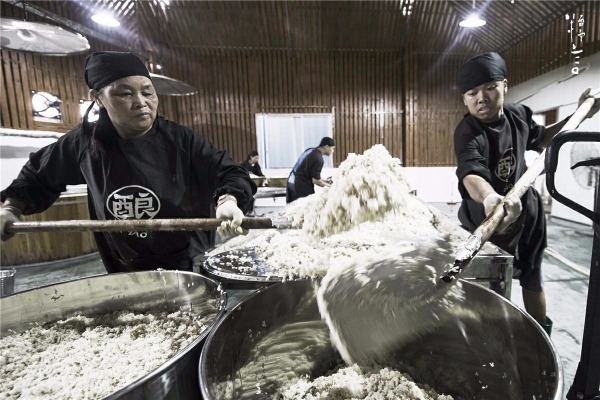 |
|
[Photo provided to China Daily] |
Six millennia to come up with a good drop
Fermenting rice for wine in China goes back more than 6,000 years, scientists have determined, on the basis of rice and pottery found at the Hemudu Archaeological Site in Zhejiang province in the 1970s. In those early days rice was put in pots and left outside to ferment, producing wine.
In Shiji (Records of the Historian) Sima Qian writes that more than 4,000 years ago an official named Yidi made zhijiu (wine) for Dayu, founder of the Xia Dynasty (c.21st century-16th century BC). Zhijiu is fermented from rice.
The American author Robert K.G. Temple writes in his book China: Land of Discovery and Invention that while most Westerners are familiar with Japanese rice wine, sake, few know that it emanated from China.
"At least before 1000 BC, or even several centuries before that, Chinese people had already managed to brew wine through fermentation," Temple writes in his 1986 book.
The wines brewed in ancient times were turbid, but as filtration and fermentation methods improved they become clearer, and more types, such as yellow rice wine and normal rice wine, were developed.
Yellow rice wine, huangjiu, is sometimes confused with mijiu, normal rice wine, because in both of them glutinous rice is the raw material. In fact proso millet or corn are also used in fermenting yellow rice wine.
The yeast for both wines also differ from one another having different flavors. Rice wine has low alcoholic content, is white or clear and sweet, whereas yellow rice wine has higher alcoholic content, is stronger and is, of course, yellow.
Rice wine recipe
1. Wash 500 grams' glutinous rice repeatedly until the water is clear
2. Soak the rice in water for 12 hours
3. Steam the rice for 30 minutes and put the cooked rice through water
4. Add 2-4 grams' sweet leaven into the rice and stir them together
5. Put the mixed rice into a glass bottle and dig a hole inside the rice
6. Wrap up the bottle with a warm blanket and ferment for 48 hours (under 16 C-20 C)